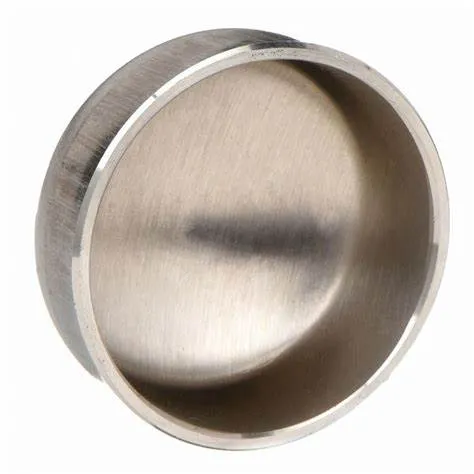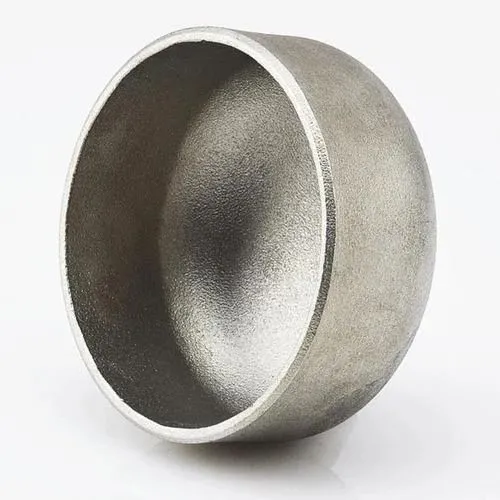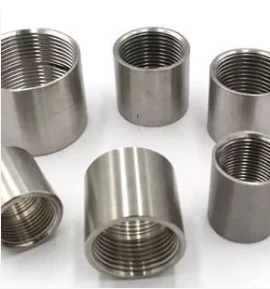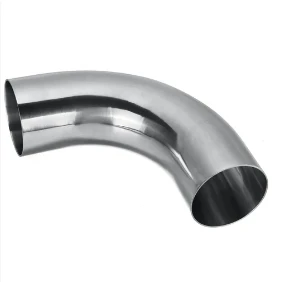Ang JIS B2311 ay isang Japanese Industrial Standard na sumasaklaw sa butt-welding pipe fittings, kabilang ang mga takip na ginagamit sa mga piping system. Ang mga takip ng butt-welding ay nagsisilbi sa layunin ng pagsasara sa dulo ng isang tubo, na nagbibigay ng selyo upang maiwasan ang pagtagas o kontaminasyon. Narito ang isang panimula sa JIS B2311 butt-welding caps:
- 1. JIS B2311 Standard:
- - Tinutukoy ng pamantayan ng JIS B2311 ang mga kinakailangan para sa disenyo, mga sukat, materyales, pagmamanupaktura, at pagsubok ng mga butt-welding fitting, kabilang ang mga takip, sa mga piping system.
- - Tinitiyak ng pamantayan na ang mga takip na ginawa bilang pagsunod sa mga pamantayan ng JIS ay nakakatugon sa mga pamantayan ng kalidad at tugma sa iba pang mga bahagi ng piping.
- 2. Butt-Welding Cap:
- - Ang butt-welding cap, ayon sa JIS B2311, ay isang angkop na idinisenyo upang takpan at i-seal ang dulo ng pipe nang ligtas, na nag-aalok ng proteksyon at pagpapanatili ng integridad ng piping system.
- - Ginagamit ang mga takip sa mga sitwasyon kung saan ang dulo ng tubo ay nangangailangan ng pagsasara, permanente man o pansamantala, upang maiwasan ang pagtagas, kontaminasyon, o upang magbigay ng pagtatapos sa system.
- 3. Materyal at Konstruksyon:
- - Ang mga butt-welding cap sa ilalim ng mga pagtutukoy ng JIS B2311 ay makukuha sa iba't ibang materyales gaya ng carbon steel, stainless steel, at alloy steel upang matugunan ang iba't ibang mga kinakailangan sa aplikasyon.
- - Ang mga takip na ito ay ginawa gamit ang mga standardized na pamamaraan ng konstruksiyon upang matiyak ang isang malakas at walang tumutulo na koneksyon kapag hinangin sa dulo ng isang tubo.
- 4. Aplikasyon at Mga Benepisyo:
- - Ang mga butt-welding cap ay nakakahanap ng mga aplikasyon sa iba't ibang industriya, kabilang ang langis at gas, mga kemikal na proseso, water treatment plant, at higit pa kung saan ang mga dulo ng tubo ay kailangang ma-cap nang ligtas.
- - Ang mga takip ay nagbibigay ng proteksyon sa mga dulo ng tubo mula sa mga elemento ng kapaligiran, maiwasan ang kontaminasyon, at tumutulong na mapanatili ang kalinisan at integridad ng piping system.
- 5. Pag-install at Welding:
- - Ang mga wastong kasanayan sa pag-install, kabilang ang tamang pagkakahanay, paghahanda ng dulo ng tubo, at mga diskarte sa welding, ay mahalaga kapag nag-i-install ng butt-welding caps upang matiyak ang isang masikip at hindi lumalabas na seal.
- - Ang welding ay isang pangkaraniwang paraan para sa paglalagay ng mga takip sa mga tubo, na nagbibigay ng ligtas at permanenteng pagsasara na makatiis sa presyon, mga pagkakaiba-iba ng temperatura, at daloy ng likido sa loob ng system.
- Sa kabuuan, ang mga takip ng butt-welding ng JIS B2311 ay mga mahalagang bahagi na ginagamit sa mga sistema ng tubo upang mai-seal at maprotektahan ang dulo ng mga tubo nang ligtas. Ang mga takip na ito ay umaayon sa mga pamantayang kinakailangan upang matiyak ang kalidad, pagiging maaasahan, at pagiging tugma sa loob ng mga pang-industriyang aplikasyon kung saan ang pagsasara at proteksyon ng tubo ay kinakailangan.
What Is a Butt Welding Cap and How Is It Used in Industrial Piping?
In industrial piping systems, end-of-line sealing and branch closures require robust solutions. A butt welding cap serves as a critical component for terminating pipes securely. By providing a seamless, welded closure, this fitting maintains system integrity, prevents leaks, and supports compliance with industry standards.
What Is a Butt Welding Cap?
A butt welding cap—also called a pipe end cap or buttweld end cap—is a round fitting designed to close off the end of a pipe. It’s manufactured to match the pipe’s outer diameter and schedule, with either a hemispherical or flat face. To install, both the pipe end and cap are beveled to form a V‑groove, enabling full‑penetration, fusion welds. Common materials include carbon steel, stainless steel, nickel alloys, and other engineered grades, chosen to satisfy pressure, temperature, and corrosion‑resistance requirements.
How Is Butt Welding Cap Used in Industrial Piping?
Butt welding caps find application across oil & gas, petrochemical, power generation, water treatment, and general process industries for both permanent and temporary closures. During hydrostatic testing, technicians install caps to seal off sections of piping while monitoring for leaks. In new construction or retrofit projects, caps terminate branch lines, future tie‑in spools, or dead‑end mains until system expansion. Welders prepare each joint by cleaning and beveling surfaces, aligning the cap precisely, and executing a root pass followed by filler passes per the qualified Welding Procedure Specification (WPS). Post‑weld heat treatment and non‑destructive examination (NDE)—such as radiography or ultrasonic testing—verify weld integrity and compliance with ASME B16.9 and related standards. Additionally, temporary caps enable safe isolation during maintenance, allowing for segment testing and dewatering under regulatory protocols.
Benefits and Best Practices
Butt welding caps offer a smooth‑bore transition that minimizes flow disruption and stress concentration. Their full‑penetration welds deliver exceptional structural strength and leak resistance. To optimize performance, engineers should:
Select caps with matching material grades and wall thicknesses
Adhere to proper bevel angles and joint fit‑up tolerances
Follow qualified WPS protocols rigorously
Consider cladding or protective coatings in corrosive environments to extend service life
Regular inspection and thorough documentation ensure long‑term reliability and safe operation under demanding conditions.
Butt welding caps are indispensable components for achieving durable, leak‑proof pipe terminations in a wide range of industrial applications.
Butt Welding Cap FAQs
What is a butt welding cap?
|
What materials are commonly used?
|
What standards govern butt welding caps?
|
How are butt welding caps installed?
|
Where are butt welding caps typically used?
|
What are the advantages of threaded caps?
|
















